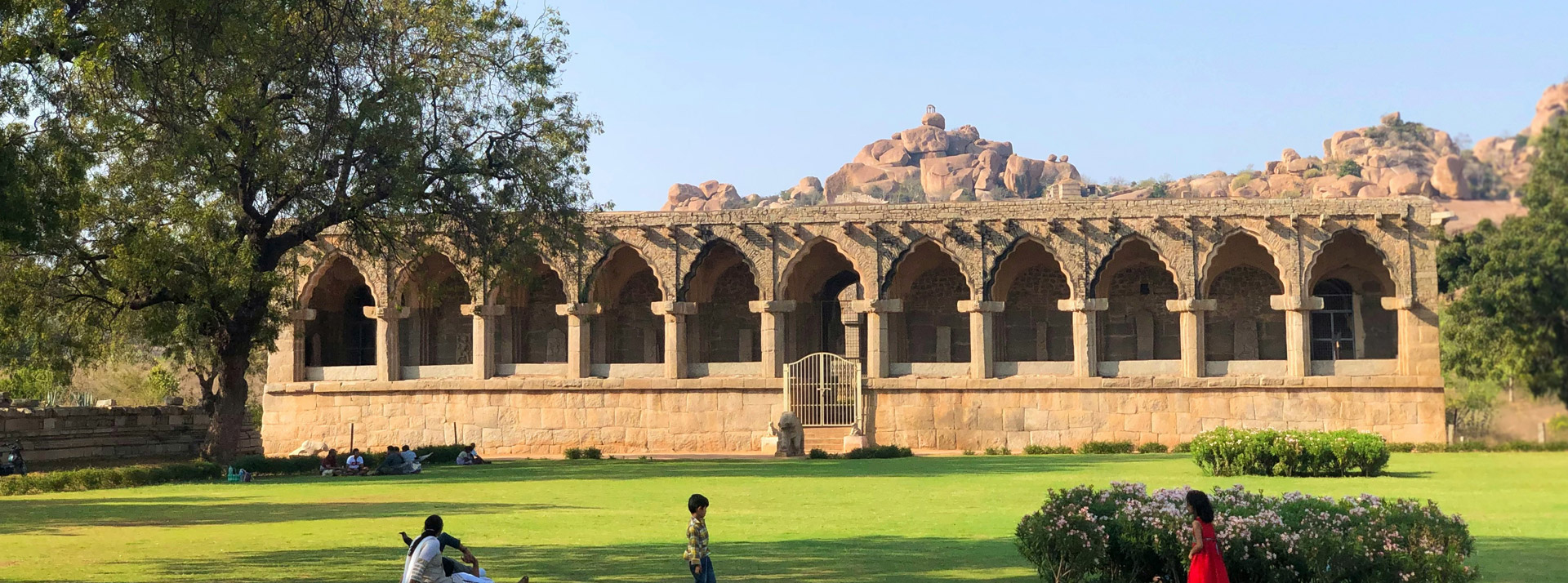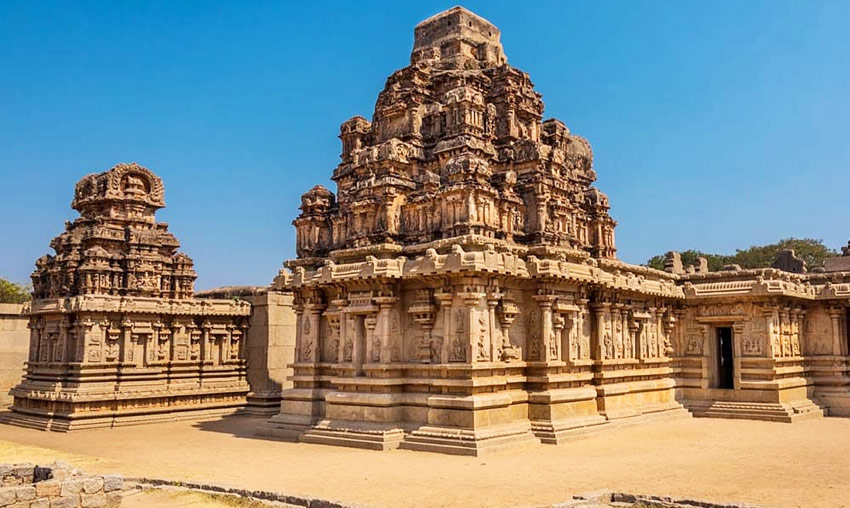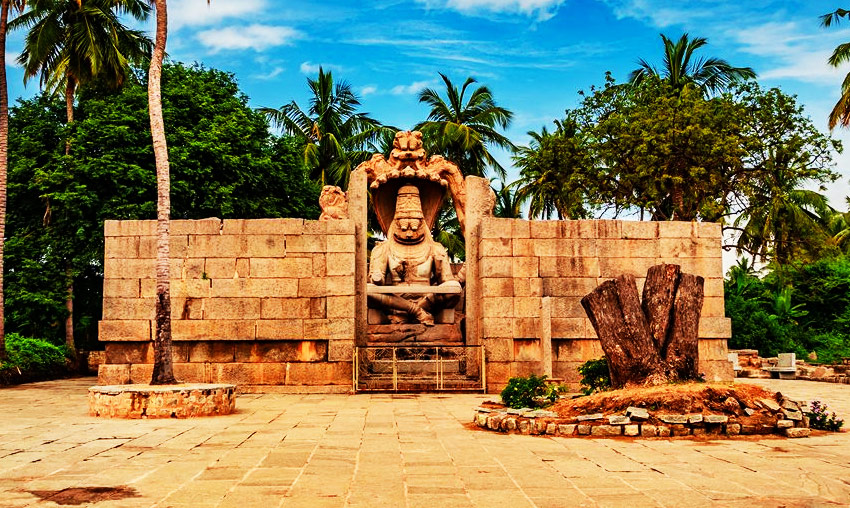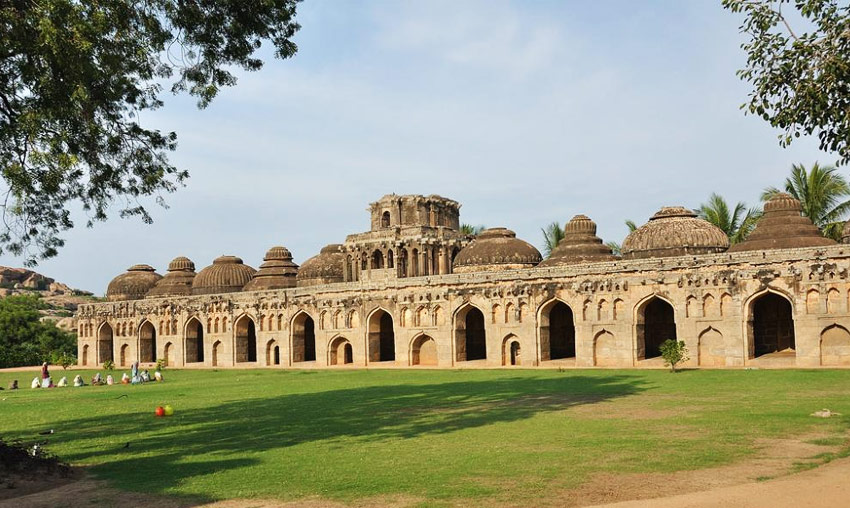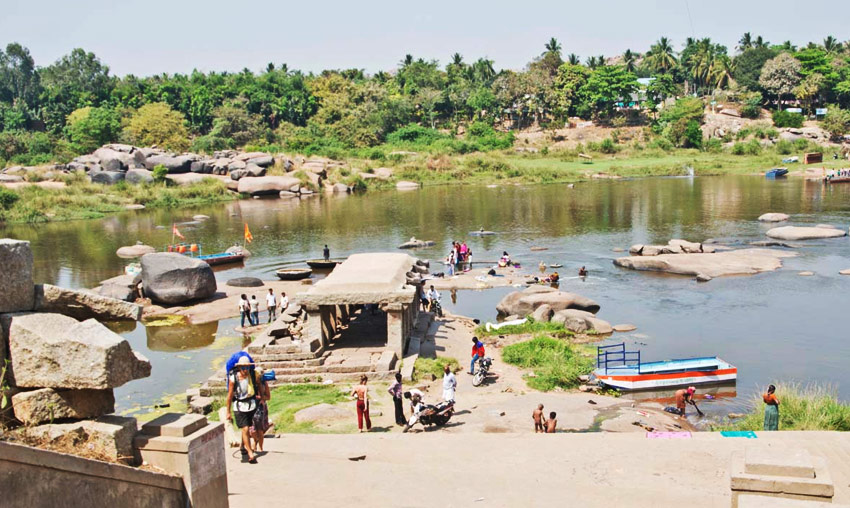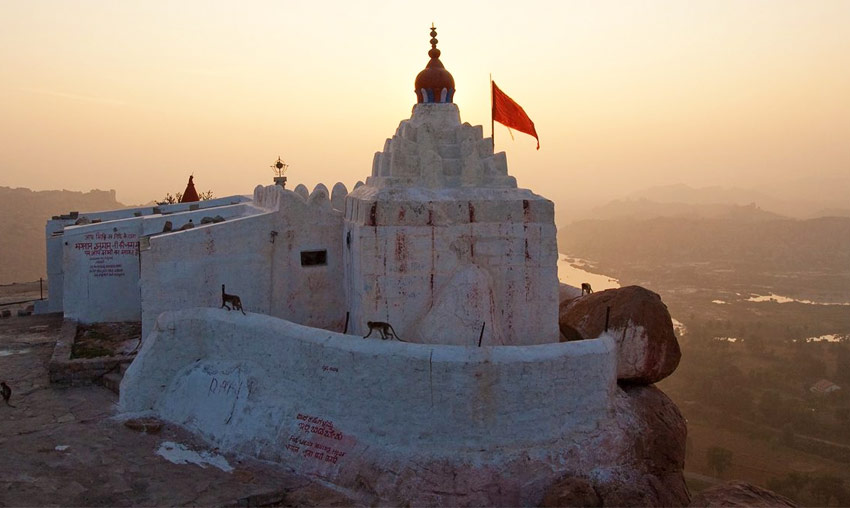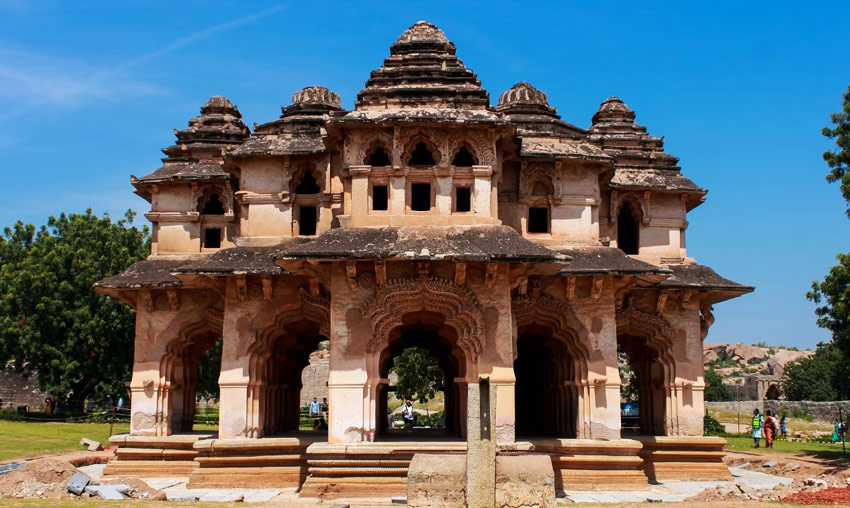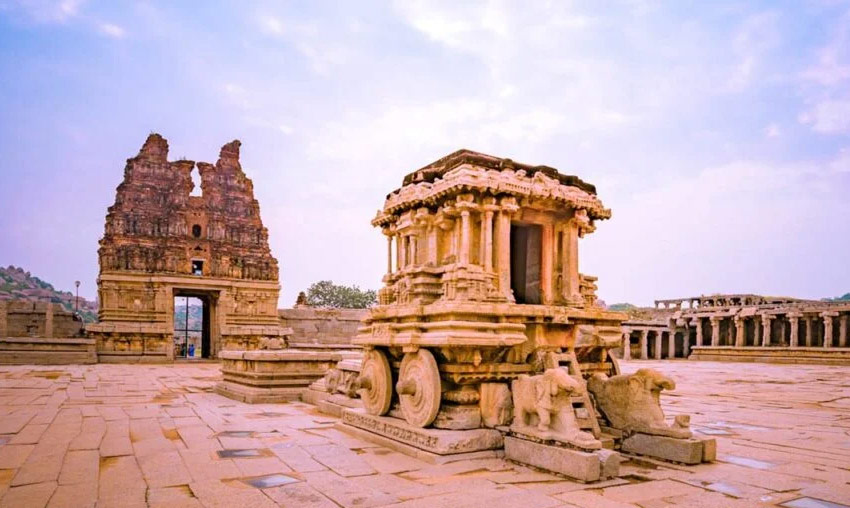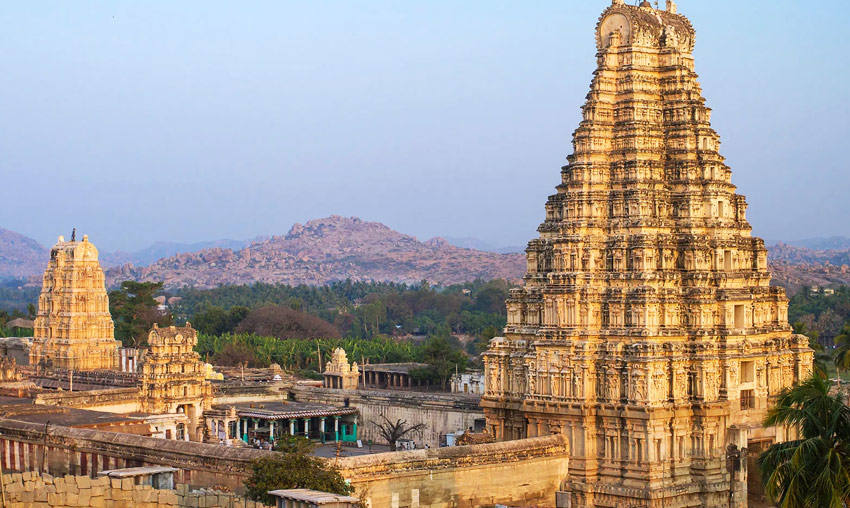Hampi - Best Places to visit, Temples & Tourist Attractions
The city of ruins, Hampi, is recognised as a UNESCO World Heritage Site. Travellers can enjoy this historical site, which is located in the state of Karnataka amid the shaded depths of hills and valleys. Hampi is a backpacker's paradise, surrounded by 500 historic sites, stunning temples, lively street markets, bastions, the Treasury Building and intriguing remnants of the Vijayanagar Empire. Explore more than 100 locations within Hampi, an open museum that offers a unique perspective on the city's past.
Around 1500 AD, Hampi served as the capital of the Vijayanagar empire and was reportedly the second-biggest city in the world. It lost significance during the ensuing centuries, and today you may explore the ruins of numerous temples and other buildings dispersed throughout a wide region. The surrounding landscape of Hampi is just as enigmatic as the ruins themselves; the city is encircled by rocks of varying sizes, and with a little effort, you can go to their summits for a breathtaking perspective of the surrounding countryside and the city as a whole. On the banks of the Tungabhadra River is where it's situated. renowned for its enormous, exquisitely carved temples, particularly the Virupaksha Temple, which honours the empire's patron goddess. Here are also the remnants of former military barracks and stables, as well as old aqueducts and canals. Since Hampi was named a UNESCO World Heritage Site in 1986, great efforts have been made to preserve the once-great site's splendour. Very few, if any, contemporary buildings are permitted in the main area, maintaining the ruins' original character.
Places to Visit in Hampi
The top places to Visit in Hampi are Virupaksha Temple, Hampi, Vithala Temple, Lotus Palace, Yantrodharaka Hanuman Temple, Hampi Bazaar, Hippie Island.
Top activities in Hampi
The top activities in Hampi are Hampi Half Day Walking Tour , Anjaneya Hill Half Day Trekking Experience, Hampi Heritage Private Half Day Tour, Hampi Half Day Bicycle Tour, Hampi Half Day Tour by Tuk Tuk , Hampi Private Car Charter (4, 8, or 12 Hours).
History of Hampi
In 1 CE, the earliest Hampi towns were established. It appears from the Rock Edicts of Emperor Ashoka that the area was formerly influenced by the Mauryans. From the excavation site, artefacts including a Brahmi inscription and a clay sealing were found. They are both from the second century CE. The Deccan Muslim Sultanate has also besieged the place that dominates history and architecture. With Hampi serving as the principal hub, trade was quite active under the Vijayanagara Empire. This drew numerous kings, both Muslim and Hindu, to the little town. The rich culture of the Hampi people is the product of various laws and empires. The popularity of the old town stems from its significance in archaeology. The ruins, concert halls, bazaars, and boulders speak of the greatness of Vijayanagara Empire.
The Enchanting Ruins
With a total area of thirty square kilometres, Hampi boasts a great number of well-preserved monuments. While the most well-known and must-see landmarks are the Virupaksha and Vitthala temples, you can spend hours strolling or cycling around the city and discovering many more intriguing buildings and less well-known temples and palaces. The majority of the ruins are dispersed around the city, with the remainder being in the northern portion of the city, directly south of the Tungabhadra River.
Culture and Religion
The pilgrims' joy and backpackers' vacation destination is steeped in culture, untouched by modern westernisation. Since the little town has been designated as a world historic site, UNESCO has worked to restore and preserve the culture. The views and way of life of the populace are reflected in the culture. Dance, music, and theatre are all ingrained in Hampi culture. Concert venues that bear the marks of the town's traditional music gatherings have been preserved. Hampi's dynamic and rich culture is rooted in its history. Hampi's architecture reflects elements of both Muslim and Hindu design.
Hindu, Muslim, and Jain architecture around temples such as Krishna Temple, Hazara Rama Temple, and Pattabhirama Temple. Religion: In Hampi, Hinduism was practiced predominantly by two groups of people: the Saivites and the Vaishnavites. While Lord Vishnu is worshipped by the latter group, Lord Shiva is worshipped by the earlier group as the destroyer. Even people's minds are improved by the teachings of Jainism. The rest of the lot demonstrates Islam's beliefs because Hampi was formerly controlled by Muslim emperors.
How To Reach Hampi
Hampi is easily reachable by rail and car. Despite being 12 km from Hampi, the railway station is located in Hospet. However, from the Hospet railway station, one can travel to Hampi town via local bus or autorickshaw. Most tourists don't want to fly into the closest airport, which is located in Hubli (143 kilometres).
Best time to visit Hampi
The winter months of October through February are the ideal times to visit Hampi. With the exception of the hottest afternoons, the weather is still generally pleasant for touring the World Heritage Site. November is when several of the most significant holidays are observed, such as Vijaya Utsav, also known as the Festival of Hampi.
The climate in Hampi is generally dry and temperate all year round. March through June is a horrible time to visit because of the extreme high temperatures that occur during the summer. Average but erratic rainfall during the monsoon season keeps temperatures mildly cool yet humid. During the July to September monsoon season, one may decide to travel to Hampi. Although there are rarely significant downpours in the area, it is nevertheless important to avoid the slick areas to prevent accidents.
